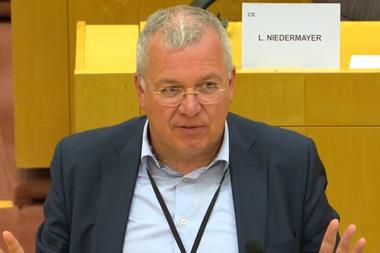Cyber threats, supply chain failure, geopolitical uncertainties and uncertain economic growth are top of mind
The biggest threats for businesses in 2022 are linked or amplified by the global pandemic and Ukrainian crisis: cyber threats, supply chain & disruption failure, geopolitical uncertainties, and uncertain economic growth notably with the increase in raw material, energy costs, and the issue of their availability as well as the inflation.
This is according to the results of the FERMA Survey, the first to be completed since the pandemic.
Cyber-attacks continue to be at the top of mind in the short (12 months) and medium-term (3 years), while risks related to sustainability are two of the top three risks in the long term (10 years) with climate change the number one risk and natural disaster number three.
“The world has basically completely changed,” observed Marco Terzago, board member of ANRA and risk and insurance manager at SKF, during the Ferma survey webinar.
He compared the effect of the pandemic and Ukraine war to 9/11 in how it is impacting the corporate world. “It has completely accelerated changes in customer behaviour, which is a strategic risk that all corporates have to face - a change from delivering products to delivering services.”
More collaborative role
According to the survey, ESG presents a growing opportunity for risk managers, who are playing or plan to play a specific role regarding ESG-related risks in their organisations (56% against 40% in 2020). Meanwhile 82% are collaborating with the CSR/Sustainability department with 32% having a close interaction, compared to 20% in 2020.
91% of risk managers are involved in corporate strategy either fully, mostly, or partially.
More than half work closely with IT and information security on cyber risks or have it within their team. More than one-third of risk managers are directly involved in the management of risks related to the adoption of new technologies by their organisation.
The interactions with the IT and Information Security teams are well-established with more than half the risk managers work closely with IT and information security on cyber risks or have it within their team.
“[Cyber] premiums are going up and it’s becoming more difficult to find insurance,” observed Karl Johan Rodert, president of SWERMA and group risk captive and insurance manager at Autoliv. ”That means companies will probably find other methods to mitigate the risk and to to find other security for their IT and information security needs.”
Triple crunch
The survey results also reflect the ‘triple crunch’ in buying insurance protection that risk managers face. Notably:
- 78% are heavily impacted or face a major impact in terms of increase in premium
- 71% in terms of reduction in capacity
- 63% in terms of limitations and exclusions on specific risks
As a consequence, risk managers are adapting their insurance strategy over the next two years, focusing on risk retention (73%), using a captive (35%), creating a captive (12%), and using alternative risk transfer vehicles (29%).
The interest in captives has gone up significantly over the past five years from 15% in 2018 to 47% today.
In addition, 41% of the respondents believe that some of their company’s activities or locations will become uninsurable in the future illustrating the growing difficulty to insure risks that are seen as systemic (eg cyber, climate change).
The FERMA Survey has taken place every other year since 2001/2002. There were more than 500 responses from 27 countries.
The data was collected from an anonymous web-based survey distributed through FERMA’s 22 member associations and the PwC European network between January and April 2022.
Responses were received from 556 respondents in 27 countries. The majority of responses came from risk managers in industry (57%) and financial services (25%) and 32% of the respondents are women.
Questions include: the profile of today’s risk manager, critical threats in short, medium and long term, sustainability and ESG, technology, insurance, strategy and governance.
Blog: FERMA 2022 Daily News Summary sponsored by AXA XL
- 1
- 2
- 3
- 4
- 5
- 6
- 7
- 8
- 9
- 10
- 11
- 12
- 13
- 14
- 15
- 16
 Currently reading
Currently readingUkraine dominates Ferma risk survey
- 17





![20221011_152332[1]](https://d9x705hv73pny.cloudfront.net/Pictures/100x67/1/4/7/93147_20221011_1523321_743215.jpg)





![20221010_112901[1]](https://d9x705hv73pny.cloudfront.net/Pictures/100x67/1/0/0/93100_20221010_1129011_262883.jpg)
![20221010_100820[1]](https://d9x705hv73pny.cloudfront.net/Pictures/100x67/0/9/6/93096_20221010_1008201_549459.jpg)























No comments yet